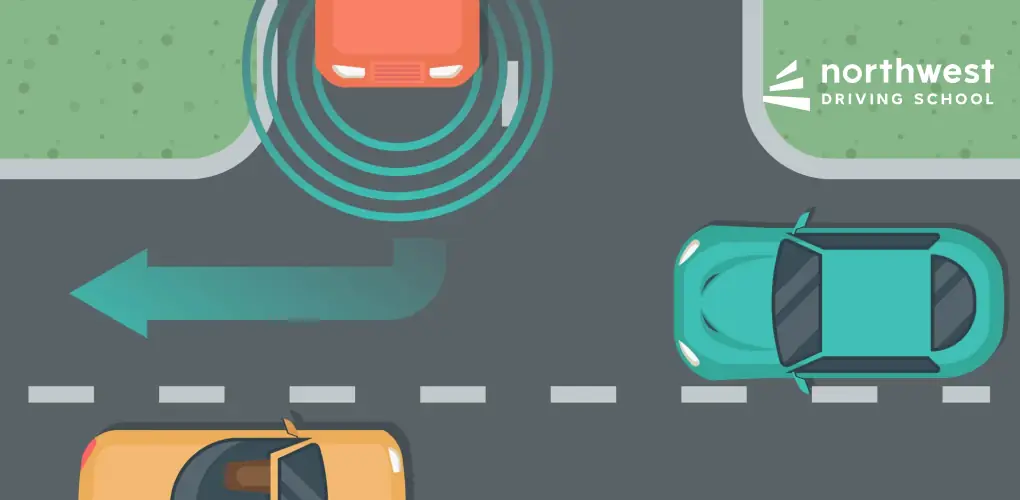- Driving School
Lane Positioning 101: Where You Should Be in Every Driving Situation

Lane positioning is the position of your vehicle within your lane while driving. It may sound like it makes little difference, but it does.
Being in the correct location allows you to see the way ahead, remain safe, and avoid accidents. It also allows traffic to pass through smoothly and keeps you away from other motorists’ blind spots.
Learn More: Mastering Lane Changes: Step-by-Step Tips for Staying Safe
Table of Contents
Basic Lane Positions
Lane Position 1 – Center of the lane
Positioning in Lane Position 1 places your vehicle in the middle of your lane. It is the standard and safest position to drive, allowing you to go straight without bends or obstacles.
Staying in the middle position gives you the ultimate control of your vehicle and the finest view ahead. It also puts you at a safe distance from the cars on either side. It ensures that you remain balanced and prepared for anything in the journey.
Lane Position 2 – Slightly to the left
Lane Position No. 2 involves steering your vehicle to the left side of your lane to some extent, but you remain within the lines. This position is helpful in several instances.
You use Lane Position 2 when preparing to turn left. Slightly moving to the left informs other drivers what you’re about to do and provides you with the best position to make the turn.
It is also helpful to avoid obstacles on the right side of the road, such as another parked vehicle, bicyclists, or obstacles. Shifting to the left gives you extra room to work with and stay in your lane safely.
Lane Position 3 – Slightly to the right
Position Lane 3 is where your vehicle is positioned closer to the right side than the dead center. You’re still within the lines, only not in the middle.
Position Lane 3 is helpful in some everyday driving situations, particularly in highly populated areas such as Las Vegas. You’ll be in Lane Position 3 as you prepare to make a right turn.
Shifting to the right allows your turn to be smoother and lets the drivers behind you see what you will do. It will also keep you away from vehicles approaching in the opposite direction.
This role is also helpful if you must cross over to avoid an obstacle to the left, such as an oversized vehicle, someone crossing to the left, or highway maintenance.
In places like Las Vegas, where traffic becomes congested, you must know how to adjust slightly to your side to ensure you remain safe and trouble-free.
Lane Positioning in Common Driving Situations
Lane positioning will vary with where and how you’re driving. On straightaway roads, remain in the middle of your lane (Position 1) and watch the lane markers and the space between other vehicles.
When traveling through curves or bends, move slightly to the side to enhance your view, facilitate easier turning, and slow down, always staying in your lane. When passing another vehicle, move to the left first to see, signal with your turn signal, and check your blind spots before moving over.
As you reach the area where you will be turning, shift into the respective lane early—Position 2 for turning left or Position 3 for turning right—and be ready to turn safely. When passing large vehicles such as trucks or buses, leave them additional space and position yourself so the driver can see you to stay out of blind spots.
When driving in inclement weather or poor visibility, remain in the middle of your lane but stay vigilant, slow down, and leave additional space to respond if necessary.
Read More: Lane Markings And What They Mean
Common Lane Positioning Mistakes to Avoid
Even seasoned drivers will make incorrect lane position blunders, which can be hazardous. Driving too close to the lane edges is one mistake. It will expose you to collision with parked vehicles, curbs, or drifting into the adjacent lane.
The other blunder is lane drifting, particularly with inattention or excessive steering wheel overcorrection. You should also shift the position in the lane to accommodate obstacles such as parked cars, cyclists, or work areas. Disregarding them can lead to sudden swerving or unsafe passing.
Finally, many drivers neglect to signal to shift position in the lane, particularly in anticipation of making a turn. Failure to use your signal will confuse fellow drivers and lead to accidents.
Here’s a quick list of lane positioning mistakes to watch out for:
- Driving too close to the left or right side of your lane
- Letting your car drift between lanes
- Not moving slightly left or right when there are obstacles or road work
- Changing position or turning without using your signal
Awareness of and avoiding these mistakes will help you stay safe and confident on the road.
Final Thoughts
Good lane positioning ensures you and all the people around you stay safe. Understanding where your vehicle should be in every scenario makes driving less stressful, easier, and smoother. Minor adjustments in your position can enable you to see better, remain in control, and avoid trouble on the roads.
If you would like to become a more competent driver, Northwest Driving School’s Behind the Wheel course teaches proper lane positioning. Contact us today to begin your path to becoming a skilled driver.


